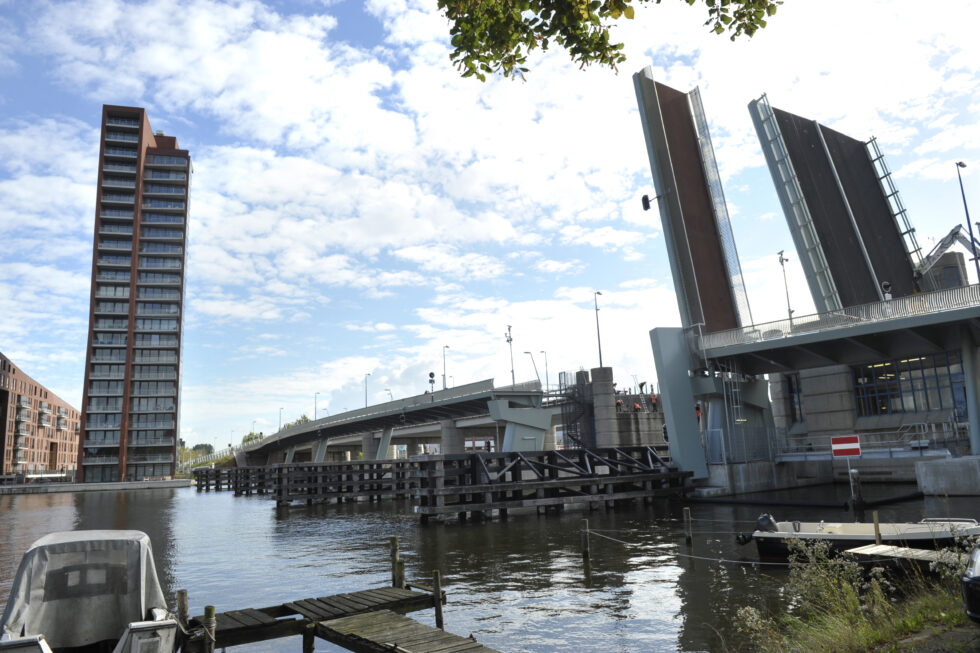
Accident at Den Uyl Bridge, Zaandam
On 6 February 2015, a woman who was standing on the dr. J.M. Den Uylbrug bridge in Zaandam with her bicycle died when the bridge was opened. The bridge operator, who was operating the bridge remotely, gave the command to open the bridge while the woman was standing on the moving part of the bridge. When the bridge was raised, the
woman suffered a fatal fall.
Safety risks with moveable bridges
The municipality of Zaanstad has had an overly one-sided approach to meeting its responsibility for safe bridge operation by approaching it primarily as a technical problem. The municipality saw the safety of bridge operation as the sum of the components that result from following the applicable standards and directives. The municipality did not consider the relationship and interactions between technology, humans and the environment, while these largely determine the degree of safety of remote bridge operation. The investigation demonstrated that the layout of the Den Uylbrug from the road user’s point of view and the execution of the operating process, the camera system and the operator’s working conditions all leave room for improvement.
As a result of this one-sided focus on technical solutions, safety - for which the municipality of Zaanstad was responsible as bridge manager - became the bridge operator’s problem. The municipality provided the bridge operators with too few guidelines to recognize and successfully assess hazardous situations. The operator took the decision on whether a bridge could be opened safely entirely on the basis of personal experience and insight. The operator had to personally assess - given the conditions at his/her workplace and on the bridge - whether or not they were in a position to make such a decision properly. The factors that played a role are not unique to the Zaan case. It is therefore important that other bridge managers in the Netherlands, as well as the municipality of Zaanstad, check what lessons they can learn based on this report.
Recommendations
To the Minister of Infrastructure and the Environment:
- Ensure that the standards and directives are amended so that they support the bridge managers in setting up and implementing an integral approach to safety for remote bridge operation, where the human factors (of bridge operators and road users) are properly addressed in addition to the technical aspects.
The standards and directives in relation to the design, use and integration of bridges must encourage bridge managers to conduct an integral evaluation of safety from the perspective of the bridge operators, slow and fast traffic and shipping.
It is also important that the actual situation at each individual bridge is identified and the applicability of regulations to this situation is determined. Currently, the same standards and directives apply to a small pedestrian bridge over a tranquil waterway as apply to a multi-lane bridge for vehicular traffic over a busy waterway alongside a railway bridge. The actions and experience of the various users (different types of road users, shipping traffic and bridge operators) of these bridges vary enormously. The standards and directives must make the situation(s) to which they apply clear and state their rationale explicitly. - Ensure that knowledge about the safety risks of human actions when operating engineering structures remotely is shared. When doing so, involve knowledge from other transport sectors such as aviation and the railways.
The Dutch Safety Board has observed that there has been insufficient research into the ‘human factors’ of remotely operating engineering structures, in particular regarding observation of these structures using cameras. Inspiration could be gained from investigations conducted in other transport modalities such as air traffic control or railway traffic control.
To the municipality of Zaanstad as the bridge manager:
- Apply an integral approach to safety to the remote operation of bridges where the interaction between humans, technology and the environment play a central role.
The interactions between humans, technology and the environment are largely determinative for the safety of remote operation. It is therefore important that the
safety risks associated with these interactions are identified in the design of a system for remote bridge operation, in changes to that system and in its daily management. Subsequently, measures should be implemented for the risks that have been identified. When doing so, it is essential that the safety situation of each bridge is considered from the perspective of the various users. The Board emphasises that such an approach is implemented as a continuous process in which incidents are monitored and any new risks are identified.
In addition, the situation at the Den Uylbrug offers room for improvement when operation is considered from the perspective of the various users. - Identify potentially hazardous situations and use these to define scenarios and give the operators periodic training in how to deal with them.
Together with the bridge operators, elaborate hazardous situations, and specify how bridge operators must assess the risks in these scenarios and how they should act in response. Use these scenarios to train the operators and to support them in their task. The scenarios should include not only the risks that could occur on or near the bridge but also in the working environment of the bridge operators themselves, the man-machine interaction in particular. Keep the scenarios up-to-date based on practical experience.
The Board believes that it is important that other bridge managers check the extent to which these recommendations to the municipality of Zaanstad apply to them.
Recommendations
Reactions













